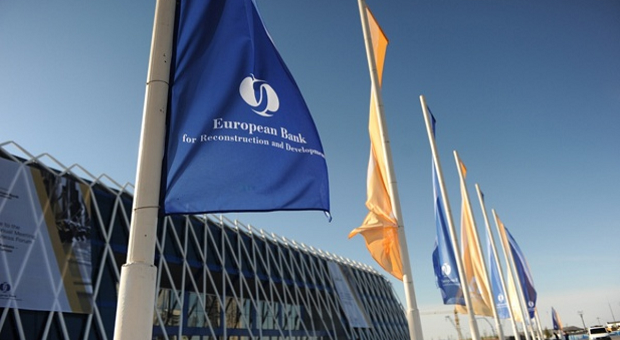EBRD Investment In Central Asia Hits €1.4 Billion

January 14, 2016 – The European Bank for Reconstruction and Development (EBRD) said it invested a record amount in the Central Asian region in 2015. Last year’s total investment rose 75 percent to €1,402.3 billion from €803 million, in 82 different transactions following 71 projects in 2014. This brings the total EBRD financing in Central Asia to just over €10 billion.
Kazakhstan reported the largest total volumes; Tajikistan and Mongolia tripled and quadrupled investment compared with the previous year; the Kyrgyz Republic and Turkmenistan kept up pace with 2014.
EBRD Managing Director for Turkey and Central Asia, Natalia Khanjenkova, said the Bank is ever more dedicated to the market transition of the economies of Central Asia, and last year’s record investment is only one of the areas where the Bank has boosted activity.
“We are also actively engaged in supporting policy reform on green energy, diversification, the investment climate and the role of the private sector. An upcoming EBRD-FT Central Asia Investment Forum on 18 February in Istanbul will discuss ways of boosting investment in the region even further,” she said.
Within the region, the largest EBRD investment was made in Kazakhstan with €708.6 million in 2015, versus €567.5 million in 2014, which was the previous record.
Janet Heckman, EBRD Director for Kazakhstan, said in Kazakhstan the EBRD continued to expand with a record 30 projects across all sectors of the economy, including SME financing, energy efficiency and climate change mitigation, municipal and regional infrastructure and agribusiness.
Mongolian investment increased more than four times year-on-year, to €467.3 million in 2015 compared with €117 million in 2014. Matthieu Le Blan, the EBRD Head in Mongolia, said 2015 was an exceptional year for the EBRD in Mongolia in many ways. “Not only did the Bank invest at levels equal to about 4 percent of Mongolia’s GDP last year, but it has also reached out to new sectors of the economy, such as telecoms and the knowledge economy. The signing of the Oyu Tolgoi copper and gold mine project was a milestone. The EBRD arranged a US$ 1.2 billion syndicated financing, the largest in the Bank’s history, as part of a US$ 4.4 billion international financing package. This project will shape the future of Mongolia.”
Tajikistan was another record breaker, with investments of €166 million in 2015, close to three times the 2014 record of €62 million, which in turn was an increase of over four times on 2013’s investment of €14 million.
Richard Jones, EBRD Head of Tajikistan, said: “The Bank invested in a record 15 projects across all sectors. Landmark transactions included an equity investment into Auchan’s first hypermarket in Central Asia, financing of Coca Cola’s new plant, and a loan to the state energy utility Barki Tojik for upgrades necessary for the CASA 1000 electricity transmission project. The EBRD also provided investment and advisory support to the financial sector, local enterprises and municipal infrastructure, and will build further on this during 2016.”
In the Kyrgyz Republic, the EBRD invested €48.6 million in 2015 (€34.8 million in 2014) and inTurkmenistan €11.9 million in 2015 (the same amount as in 2014).
Masaru Honma, EBRD Director for Central Asia, added: “The external environment facing Central Asia remains very challenging. Remittances have fallen sharply in Tajikistan and the Kyrgyz Republic, while exports are down in Kazakhstan, Turkmenistan and Mongolia. In these circumstances, EBRD financing will continue to play an important role in the region in 2016.”
The European Bank for Reconstruction and Development (EBRD) responded to another challenging year for financing in 2015 by delivering huge impact on the ground in over 30 countries where it operates through record investments of €9.4 billion.
The rise in investment from €8.9 billion in 2014 came as emerging markets worldwide witnessed the worst year for capital inflows since the start of the global financial crisis in 2008 and as banks continued to reduce their exposure to a number of EBRD economies.
